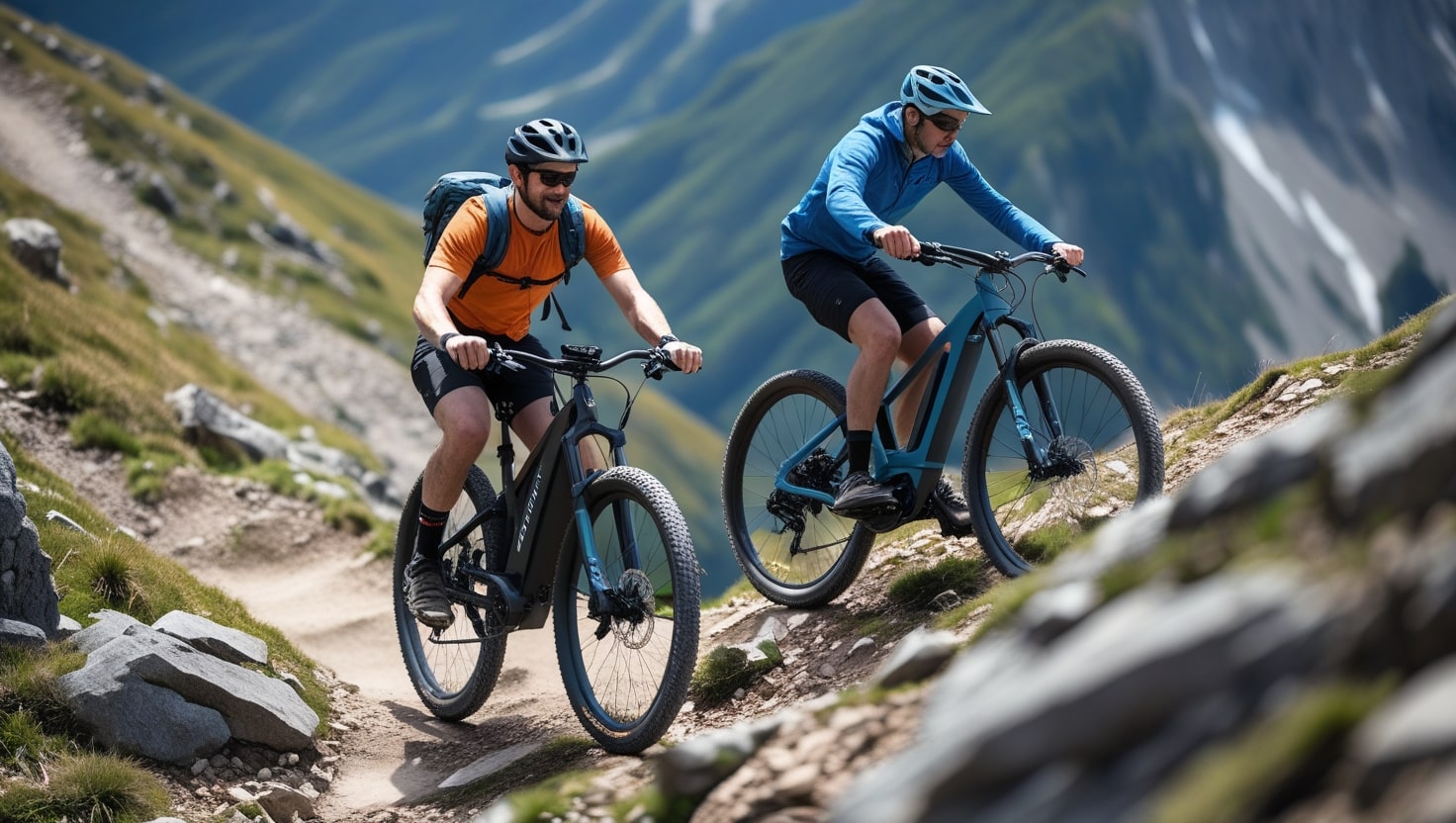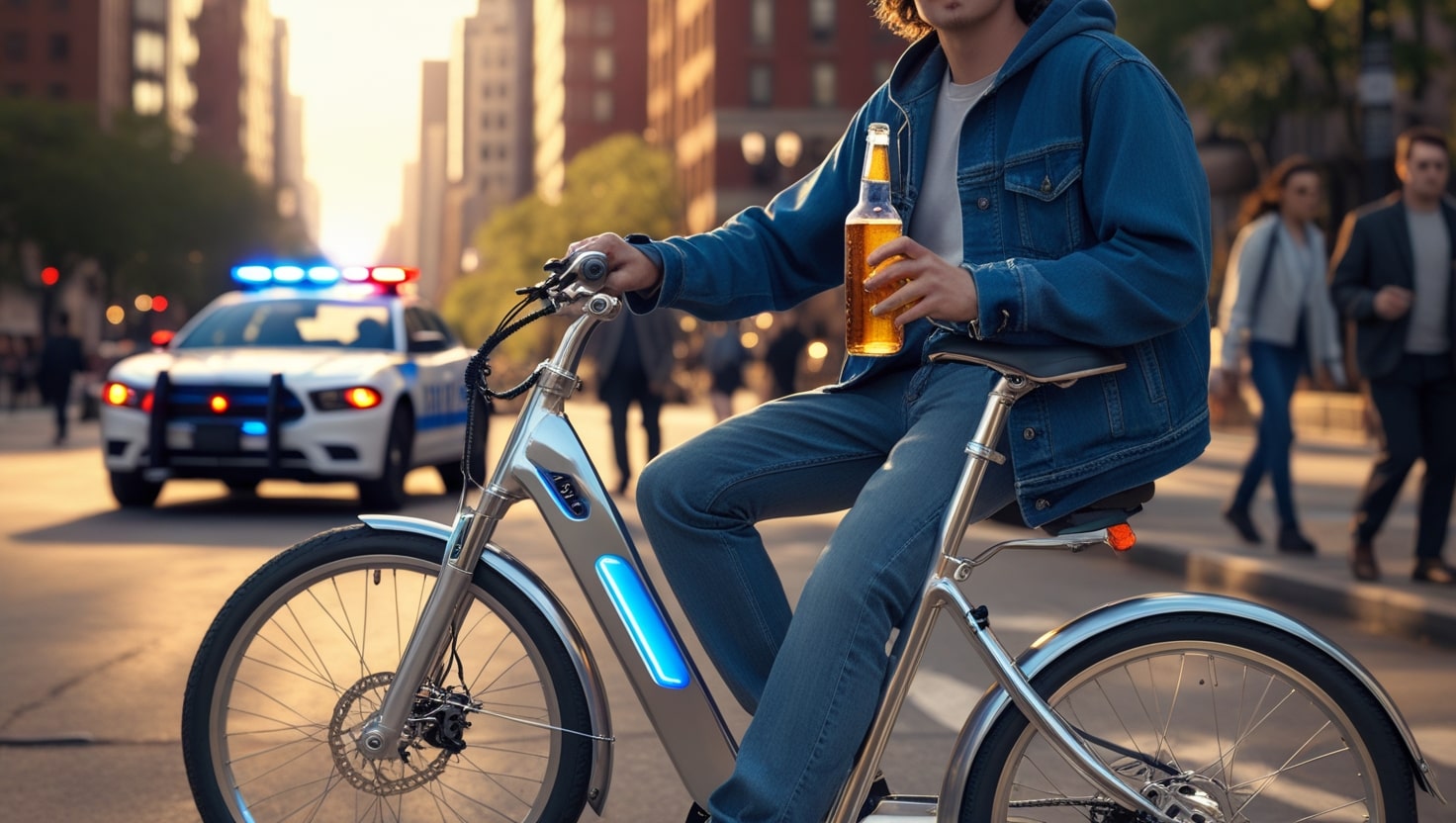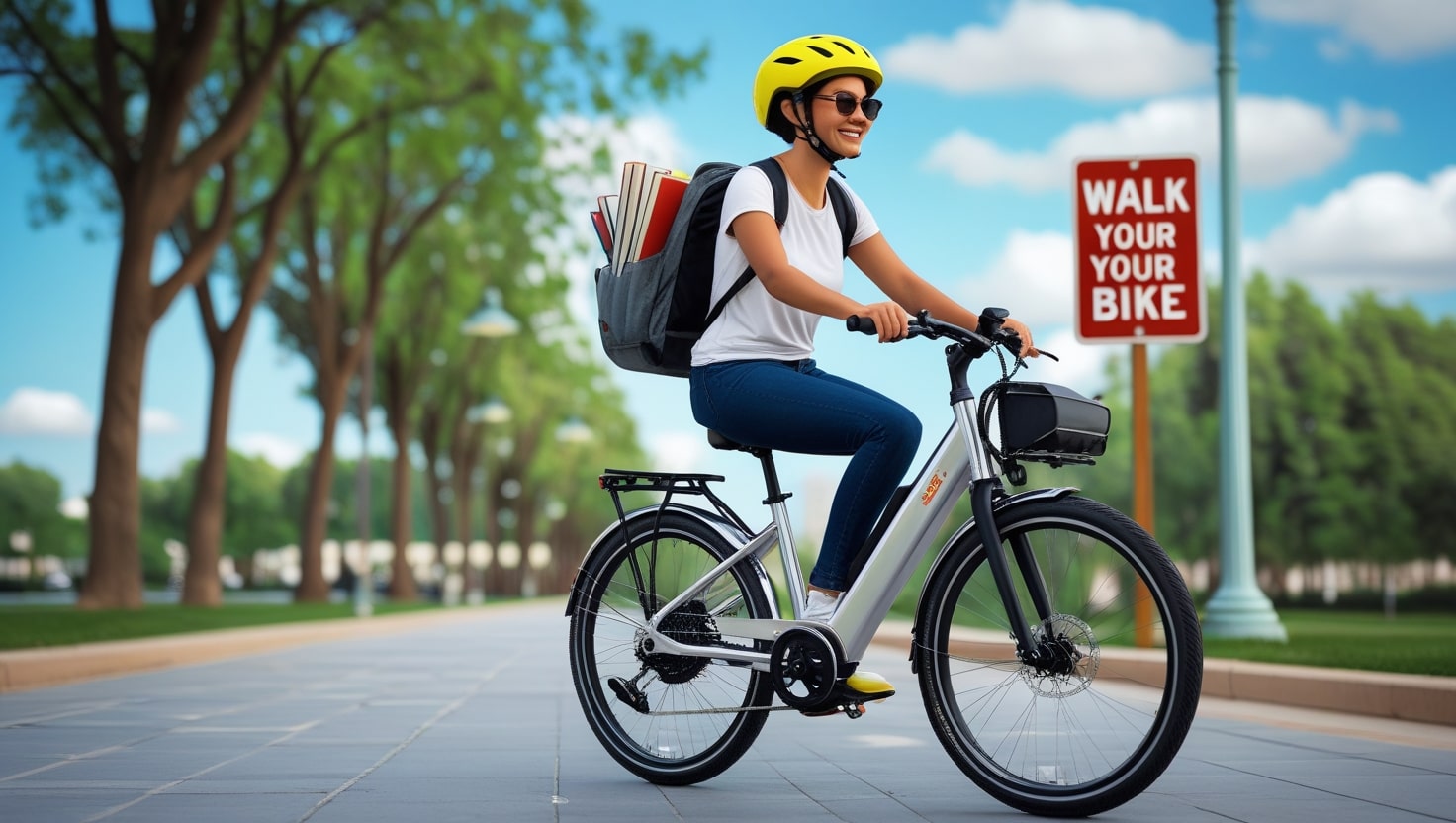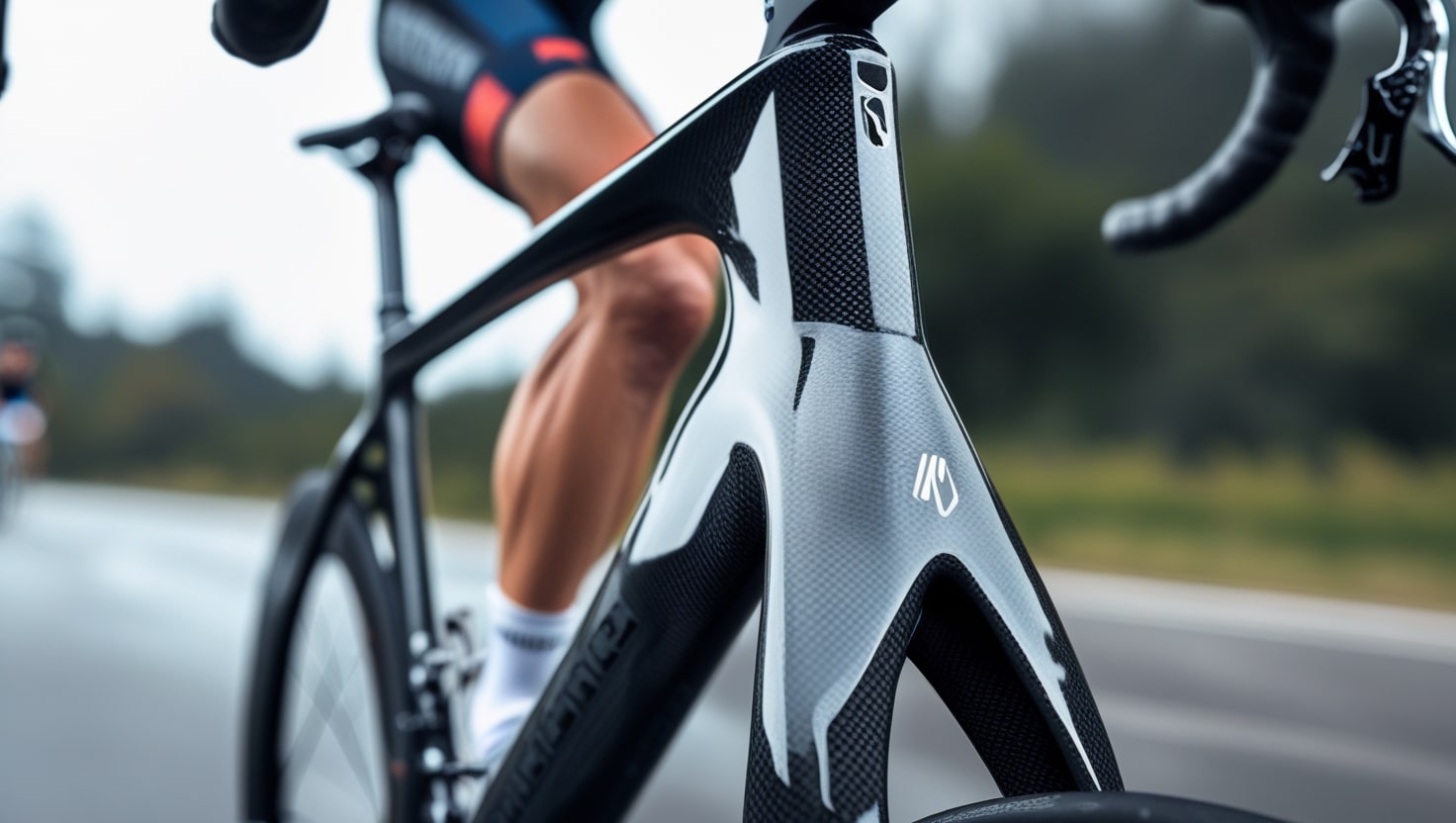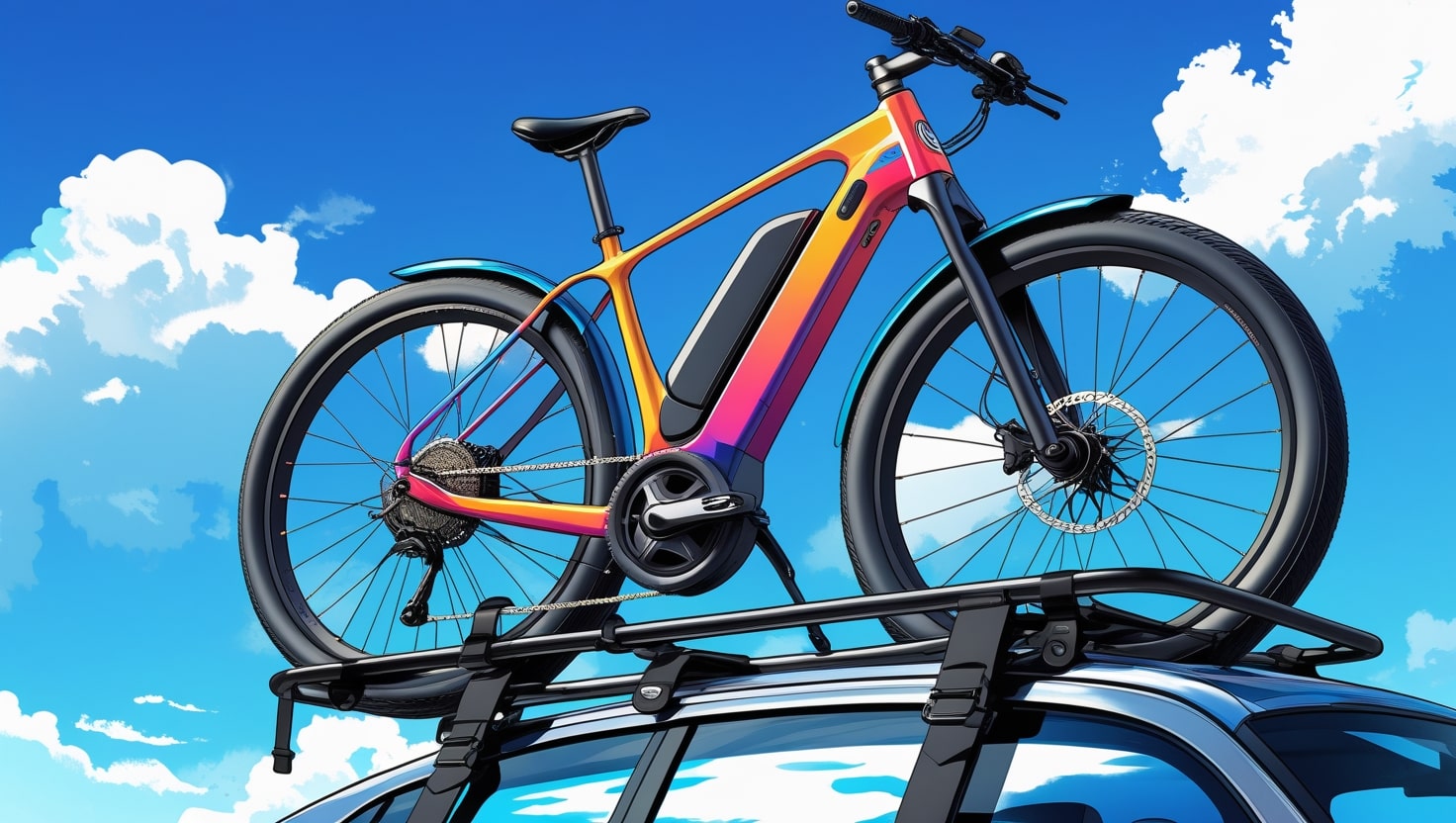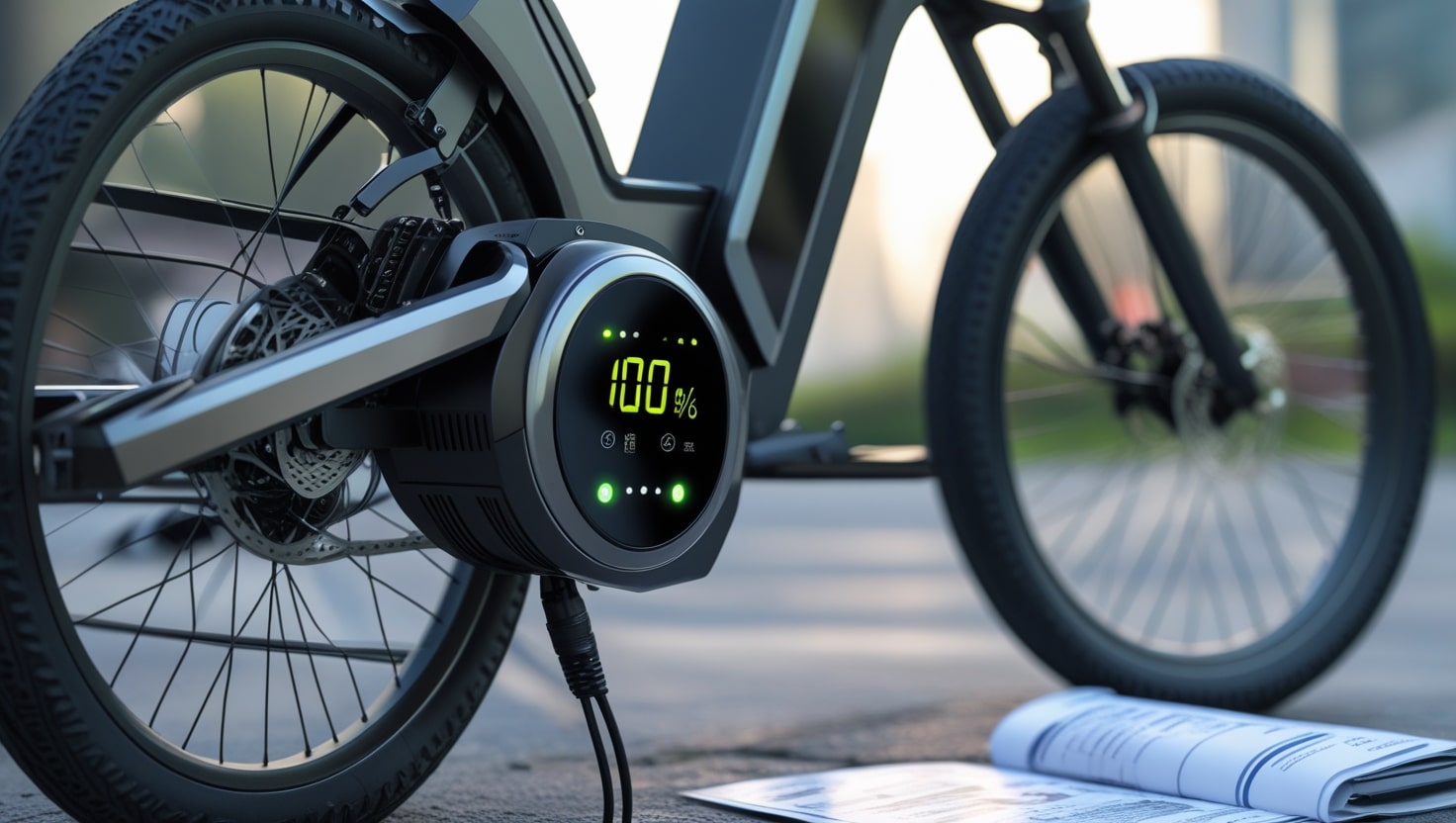As someone who’s spent years in the cycling scene, one recurring question I hear is: can eBikes go up steep hills? The short answer—absolutely, and with surprising ease. With the rise in popularity of electric bikes, more riders are discovering the joy of effortless gliding over terrain that once seemed daunting.
In my own experience, navigating tough hills with eBikes turns a chore into a thrill, especially when you’re cruising smoothly on two wheels. The convenience is unbeatable, whether you’re commuting or exploring, and the added bonus is the eco-friendliness that keeps your conscience as clear as the road ahead.
Do eBikes excel at tackling hills?
From my personal rides through winding neighborhoods and rural paths, I’ve seen how eBikes truly shine when climbing challenging inclines. The motor’s capacity mostly determines how well they can climb hills; even a 250W model can tackle modest slopes.
But for something steeper, upgrading to a 500W setup makes a significant difference, delivering the extra push and power needed. The prowess of a higher-torque motor lets you climb almost effortlessly, turning what used to be a struggle into a smooth ascent.
Also Read: how fast do electric bikes go?
The Power of E-Bikes: Why Hills Are No Longer a Problem

The Right Motor Makes All the Difference
Having the proper motor is essential while riding an e-bike up steep slopes. Not all e-bikes are created equal, so you’ll need one with sufficient power to manage steep slopes without losing speed before you reach the summit.
Hub Motors vs. Mid-Drive Motors: From my experience testing different e-bike setups, I’ve noticed that hub motors (usually located on the rear wheel) do fine on flat ground or mild hills, but once the terrain gets rugged or steeper, they struggle. In contrast, mid-power or mid-pressure motors, placed in the middle of the bicycle, offer far better stability and efficiency. These systems connect directly to the gears, allowing you to engage the drivetrain and feel the power come through the pedals. Whether you’re climbing a sharp hill or taking on a mountain trail, that smooth flow of motion makes everything feel more natural.
Motor Wattage Matters: When you’re facing long, steep sections, a motor with at least 500W of power helps, but a 1000W motor truly transforms the ride. It gives you that extra oomph to get over bumps and through tough spots easily. What’s more critical than raw strength, though, is torque—the twisting force that pushes the wheels.When it counts most, increased torque translates into more maximum thrust.
Pedal Assist: Your Secret Weapon for Effortless Climbing
The pedal assist feature on e-bikes is a big plus; it’s like having a coach at your side while you ride. Long rides and difficult hills feel much more doable since it detects the pressure you put on the pedal and reacts by giving you just the perfect amount of boost.
Low, Medium, and High Settings: The ease with which you may adjust the amount of assistance is one of my favorite things about riding an e-bike uphill. Whether you’re a seasoned owner or a casual rider, choosing between low, medium, or high settings gives you just the right boost when you need it. On gentler hills, a low setting might give enough push, but when the road gets steeper, I often crank it up to high and feel that satisfying burst of electricity kick in. It helps me maintain a smooth cadence, even on long inclines, keeping my ride consistent without tiring me out from the start.
Gear Shifting for Maximum Efficiency: The right gear makes all the difference when climbing. I always start by switching to the lowest gear—it lightens the load on my legs and improves overall efficiency. With a powerful motor and proper gears, your bike handles lifting like a champ, leaving your energy saved for later stretches. It’s all about the right approach—smooth pedaling, timely shifts, and letting the machine do the work.
Features to Look for in an E-Bike for Hill Climbing

Battery Power:
When I first started riding an e-bike in hilly areas, I quickly learned that a powerful battery is everything. You don’t want to reach the pinnacle of a steep incline only for your ride to lose steam. To avoid this, choose an e-bike with a 500Wh or greater battery capacity. It gives you more electricity for longer rides and helps with those tough uphill climbing moments. Modern bikes often come with fast-charging skills, so you can juice up during a break and be back on the road without a long wait. With this kind of support, you’ll handle multiple ascents and still have power to spare for the return journey.
Brakes That Can Handle the Descent:
Once you conquer a climb, the descent becomes the next big challenge. From personal experience, flying down a mountain or wet terrain without reliable brakes is not only scary—it’s unsafe. Your e-bike needs strong hydraulic disc brakes to ensure proper stopping strength, especially in muddy or slick conditions. A solid braking gadget helps prevent loss of control when picking up pace on hilly paths. It’s also essential for maintaining steady speed on bumpy or choppy sections. Good brakes allow you to manage every slope with confidence, even if the road is unpredictable.
Suspension: Comfort Meets Control
If you ride over rough terrain, having proper suspension will completely change your experience. A full suspension system—with both front and rear shocks—can absorb each shock from bumpy surfaces, making the ride smoother and easier to handle. I’ve found that navigating structures like forest trails or uneven paths becomes far less tiring with better suspension. It gives you sharper manipulation, greater control, and keeps your focus sharp when you’re tackling a challenging incline or descending quickly.
Tips for climbing hills on an eBike
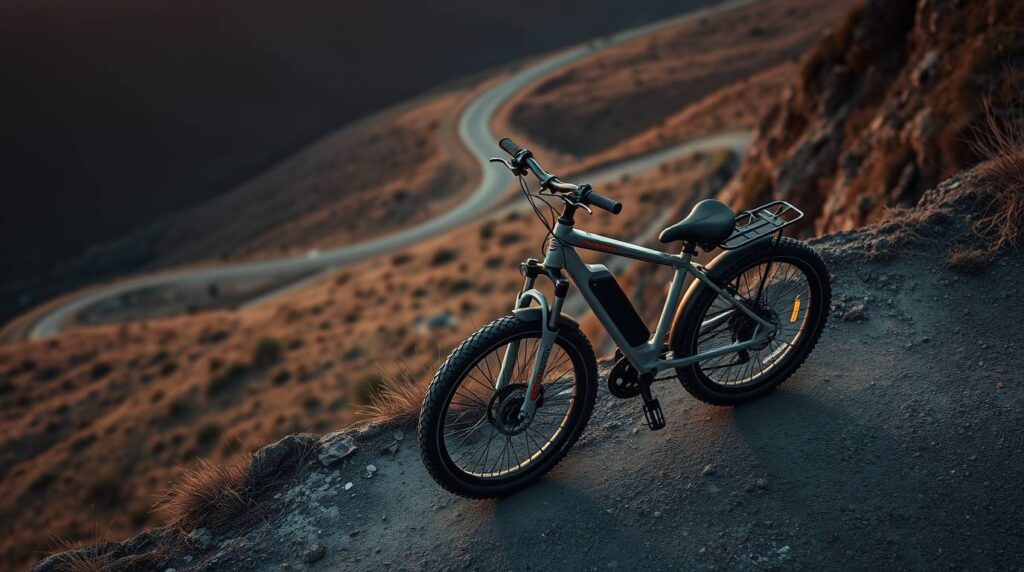
When you employ the proper strategies, riding an e-bike up hills can feel effortless. The following tips will improve the efficiency of climbing slopes and the comfort of your uphill ride, regardless of your level of riding experience.
1. Understand Your eBike's Features
Before you even begin a climb, it’s essential to know your eBike inside and out. Get familiar with its key features like the motor strength, battery capacity, and the different assist modes. These capabilities can make or break your hill-riding experience. I’ve found that when you understand your bike’s setup, you can plan for more efficient rides and choose the most optimal settings when facing a tough hill or long ascent.
2. Utilise Pedal Assist Wisely
Pedal assist is a game-changer, especially when climbing steep hills. I usually start with a low setting and adjust the levels depending on the terrain. When the slope becomes challenging, increasing the support gives that extra help to keep your legs moving without burnout. Try out different modes to see which setting works best for you—it keeps things manageable and saves your energy for longer climbs.
3. Master Gear Shifting
Using the right gear can make a huge difference on inclines. Always shift early and gradually, especially before the hill gets too intense. Lower gears help with easier pedal strokes and maintain a steady cadence. The key is shifting smoothly to avoid losing control and keeping momentum during tough uphill pushes.
4. Balance Your Weight
Proper weight balance makes climbing feel safer and more stable. Make sure to distribute your body weight evenly, leaning slightly forward to keep your center of mass closer to the centre of the bike. This improves stability and prevents the front wheel from lifting or the bike from tipping backwards during steep climbs. That upright position also allows better handling and control on tricky terrain.
5. Use Throttle Mode Strategically
If your e-bike comes with a throttle, don’t rely on it all the time—but use it smartly. On extremely steep climbs where pedaling alone is tough, a quick boost through the throttle can help you engage your strength and give your legs a break.
6. Maintain a Consistent Pace
One of the most important habits I’ve developed on uphill rides is keeping a steady and consistent pace. Avoid quick bursts of acceleration and sharp deceleration—they drain energy faster and increase consumption unnecessarily. Smooth transitions help manage your power use and make your ride more enjoyable.
7. Choose the Right Route
Before any serious climbing, I always plan my route. If your eBike isn’t built for aggressive climbs, look for paths with gradual inclines instead of steep ones. These moderates slopes help you ride more efficiently and preserve battery. I often find that choosing alternate routes with better terrain not only reduces strain but increases the enjoyment of the journey.
8. Keep the Battery Charged
There’s nothing worse than hitting a climb with a low battery. I make sure to regularly charge my eBike, especially before long or steep hills. A fully charged battery gives maximum output and helps prevent sudden depletion during the climb. This also ensures better control and power delivery when it matters most.
9. Learn Body Positioning
Riding uphill requires more than just pedaling—it’s also about how you hold your body. Slightly leaning forward helps distribute your weight properly and improves traction, especially on loose terrain. This riding position can greatly enhance your bike’s efficiency and control.
10. Practice, Practice, Practice
Like any other skill, climbing hills on an eBike improves with practice. Start small and gradually work your way up to tougher hills. Experiment with different techniques until you find what works best for you. Over time, you’ll build the confidence needed to conquer steep climbs and truly begin mastering the art of electric hill climbing.
Also Read: 12 Best Mid Drive eBike
Can Ebikes Go Down Hills?

Indeed, e-bikes can descend just as easily as conventional bicycles. They have well-known parts like gears and brakes that assist riders in controlling their speed when descending. Nevertheless, there are a few significant distinctions to be aware of.
Motor Assistance: While eBikes are known for helping you climb, they also handle downhill rides with ease. The motor still provides a bit of assistance, but since pedaling is often reduced, it’s far less noticeable. As a rider, I usually rely more on gravity here, but it’s good to know that the electric system supports you even when descending.
Regenerative Braking: One cool feature on some e-bike models is regenerative braking. These systems help recharge the battery when you’re going downhill, which is great for extending the range of your ride. While not every bike has this, it’s a smart addition if you often tackle long descents.
Brakes: Whether your bike uses mechanical or hydraulic brakes, both are crucial for controlling speeds while descending. From my experience, you must use them judiciously to avoid overheating or wearing them out too fast. Traditional bikes and eBikes alike need solid braking to help riders maintain safe and steady speed on steeper slopes.
Handling: Since eBikes are usually heavier due to the battery and motor, the weight can change how the bike behaves when going down hills. Their handling and characteristics feel a bit different from regular bikes. I always remind new riders to stay aware, adjust their style, and stay in control of their riding posture to keep things smooth.
Speed: Because of higher power and output, eBikes can pick up serious speeds on a decline. It’s important to stay cautious, especially in areas with local regulations. Always adhere to limits, even if your bike is capable of going faster.
Best E-bike for hills
When it comes to conquering uphill climbs, the most optimal ebike is one that offers a powerful motor, high torque, and a long-lasting battery capacity. From my experience, these three components work together to deliver the support needed for smooth ascents. Look for e-bikes that feature multiple assist levels and a smart system with user-friendly controls, allowing you to adjust based on the slope. A thoughtfully engineered design with balanced weight distribution adds to the overall stability, while responsive pedal assist keeps the momentum strong without draining your energy too quickly.
Other key elements include a lightweight, sturdy frame, reliable gearing, and high-quality tires with solid traction—all of which enhance control on rough slopes. You’ll also want something that provides a seamless riding experience, which is especially important on uneven terrain. Many newer models focus on accessibility and flexibility for all types of riders.
Also Read: Fiido X Folding Electric Bike Review
Safety Tips for Hill Climbers
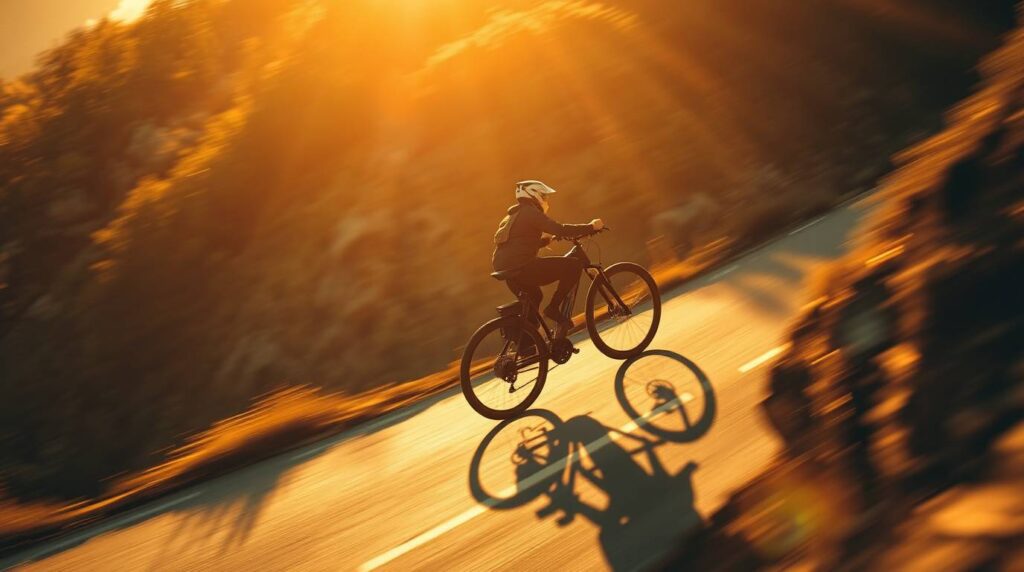
Brakes: When tackling steep descents, a reliable braking system is essential. Make sure your e-bike has strong brakes that can handle speedy slopes and keep you in control while riding downhill.
Lighting: If you’re out at dusk or dawn, your visibility matters. Use both front and rear lighting to ensure others can see you clearly.
Protective Gear: Always wear the right gear. Items like helmets, knee pads, and gloves should be part of your regular checklist—they help prevent injuries during descents and tough uphill pushes.
Conclusion
Riding an eBike through gradients and uphill paths has been a truly transformative experience for me. The electric assistance, combined with robust motors and intelligent controls, makes navigating steep terrain feel smooth and almost effortless.
Thanks to modern technology and the versatility of today’s bikes, even challenging climbs become part of the joy of cycling. I’ve discovered just how far these machines can go—pushing the boundaries of what many thought possible on the road. It’s a blend of efficiency and adventure, offering a seamless ride that brings comfort and ease to riders of all levels.
Also Read: Do Bikes Have Weight Limits?
FAQs
Do Motor Types Make A Difference?
Absolutely—motor type matters a lot when it comes to climbing steep hills on e-bikes. From my own rides, I’ve found that a more robust motor, especially a crank drive system, does a better job of delivering substantial assistance and making uphill paths feel far more navigable. These motors are often recognised for their high power and advanced capabilities, making even tough terrain manageable. On the other hand, hub motors may be less potent, but they still offer sufficient support for moderate hills. Unless you’re tackling something exceptionally steep.
Can an 250w eBike Go Uphill?
A 250W motor may seem modest, but it’s more than enough for the majority of individuals, especially those riding in urban or moderately hilly areas. In my experience, even newcomers to e-bike riding can handle uphill climbs adequately if the slope isn’t extreme. While those living in mountainous terrain might find higher power more advantageous.
Can a 500W eBike go uphill?
If you’re tackling frequent uphill rides or live in a hilly area, a 500W motor can make a big difference. In my own commutes, I found that upgrading from a 250W to a 350W, and eventually to a 500W setup, made climbing smoother and faster. It’s especially advantageous for individuals who ride daily or carry extra weight.
Can you go uphill on an eBike without pedalling?
Yes, you can go uphill on an e-bike without pedalling, but it depends on whether your eBike has a throttle. Some bikes are equipped with both pedal assists and a throttle, giving you options for how you want to climb a steep hill.
What gear do you use when going uphill on an eBike?
When you ascend a steep hill, the key is to shift into a lower mechanical gear to keep your ride smooth and manageable. I always start by augmenting the assistance level to get enough power, especially on uneven terrain with frequent inclines and declines. As you’re navigating these changing paths, it’s important to adjust your settings quickly to maintain control and comfort.
Which gear is best for riding downhill on an eBike?
When riding downhill on an eBike, it’s best to shift into a higher gear. This choice helps optimize your efficiency by letting the bike coast more smoothly, using the natural momentum from the descent. From my own experience, this not only makes pedalling easier but also helps minimize fatigue and keeps the speed under better control. Adjusting to the right gear maintains stability, prevents build-up of excessive speed, and promotes a safer, more controlled ride with fewer demands for continuous pedal effort.
How steep of a hill can an eBike go up?
An electric bike can handle quite a range of inclinations, especially when you’re prepared to put in a bit of work. From my own ride tests, most eBikes can confidently manage a gradient of 1 in 10 (or 10 percent) without much trouble. With more effort and the right setup, you can tackle even steeper hills, up to a maximum grade of 1 in 7 (about 14 percent). This is especially helpful in hilly or topographically diverse areas, including nations known for rugged landscapes. With the right mindset and confidence, those uphill difficulties start to feel a lot more doable.
Also Read: How Fast 1600w Ebike Go?

